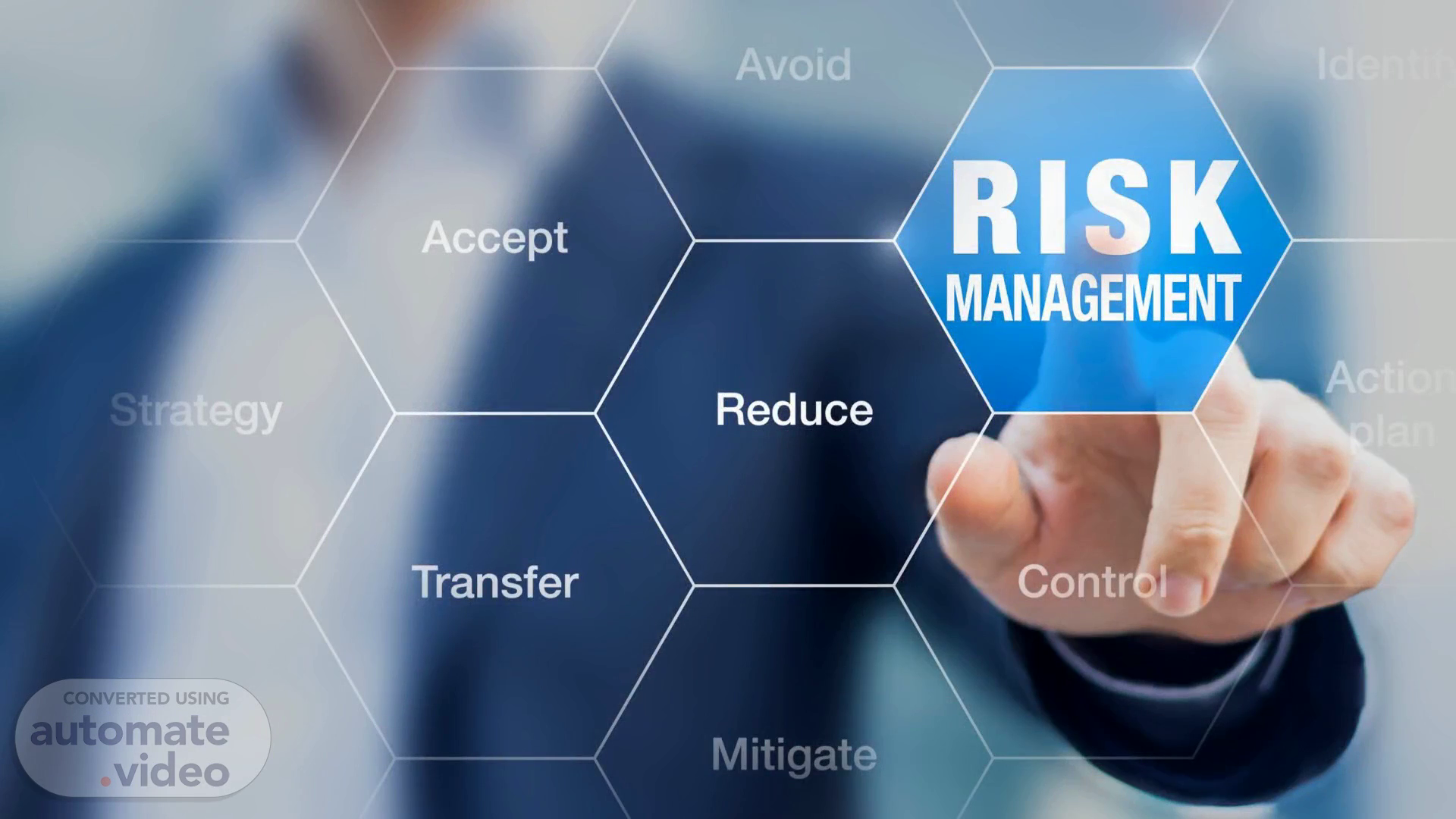
5 TIPS FOR GREAT RISK MANAGEMENT
Scene 1 (0s)
Avoid RISK MANAGEMENT Accept Atrategy Transfer Reduce Mitigate Contr i.
Scene 2 (5s)
Risk management is a huge and rich topic, & one of the most important in project management.
Scene 3 (18s)
When you want to identify risks at the start of your project, there are many tools you can use but one of the favorite is the spectres framework..
Scene 4 (36s)
S stands for social or sociological. There are going to be number of risks that arise from society or from social interactions among stakeholders and members of your team and members of governance organizations and the client and the customer. So think about society, think about social risks and think about sociology..
Scene 5 (52s)
P stands for political risks and its easy to think about political risks with a capital P. National Politics, local politics, regional politics and the implications of that in terms of legislation and regulation. However for many projects the real political risks are much more local than within the organization. They are among the people and among the stakeholders with which the project concerns itself..
Scene 6 (1m 12s)
our : au Intu. Then E stands for economic risks. These are financial risk that can impact upon your project and yes they can come from the wider economic issue within the organization, within perhaps even your country. However again, these are probably more likely to be the financial risks that are relatable to things like exchange rate fluctuations, cost of materials, cost of labor etc..
Scene 7 (1m 32s)
C stands for commercial risk. These are to do with the commercial environment within which you and the client organization exist. There The competitive pressures that you’re under, there the supply chain issues everything’s doing the commerce nature of the organization and therefore of the project..
Scene 8 (1m 47s)
T stands for technology and luckily nothing ever goes wrong with technology. And therefore there are no technological risks. Just in case there are we have to inspectors to remind us that technology can sometimes let us down or in fact become superseded during the life cycle of a project..
Scene 9 (2m 4s)
R stands for regulation. Most organizations are subject to a welter of different regulatory requirements and standards. Therefore the projects they sponsor one must be aware of the regulatory risk like health and safety rlegislation, diversity legislation, compliance with quality standards All sorts of quality risks.
Scene 10 (2m 19s)
And thinking about regulationthat brings us to the second E, environmental risk and again it’s very easy to think about the environment with a capital E because those issues are very present in many of our minds at the moment the global environment is a big risk point for a large number of major projects..
Scene 11 (2m 35s)
But for many projects the environmental risks are gained a lot of more local . Think about light conditions, about air conditions, think about contamination, those sorts of things are going to be the sort of risks that many projects have to deal with..
Scene 12 (2m 51s)
And finally the last S of “Spectres” can stand for either safety or security Risk where people can get harmed, where data can be breached, where buildings can be broken into, we have safety, we have security risks..
Scene 13 (3m 5s)
Now we shall discuss the 5 Tips for great risk management.
Scene 14 (3m 16s)
Tip #2 As a professional project manager, it will be great if you already knew a large number of the risk that are going to come up on your next project and you probably do but make it easy on yourself. Keep a running list of all the risks you identify on all your projects. So, that when you come to another project you’ve already got a categorized list of potential risks to consider and as you complete that project add new risks to that list review the categorization to see if it’s still the most useful categorization you have got. and that gives you a checklist to start your next project..
Scene 15 (3m 45s)
When we evaluate risk, we talk about likelihood of them, occurring and impact if they do. And sometimes its valuable to think about the type of impact, rather than just give an impact rating on a scale, One, two,three, four,five or two, four eight,sixteen etc. It’s often worthwhile thinking about what really matters to your project and then creating an impact scale based on that principal factor..
Scene 16 (4m 9s)
Terminate treat transfer and tolerate, that’s a pretty familiar framework. For many people, the four main strategies for handling risk and that framework maps nicely onto the PM eyes own framework that you will find in the PMBOK GUIDE, there you’ll find it articulated as AVOID, MITIGATE,TRANSFER AND ACCEPT. But whether you calll it mitigate or treat that seeming single strategy is actually two strategies..
Scene 17 (4m 33s)
Tip #5 Estimating Likelihood Keep it simple. Final tip is about estimating the likelihood of a risk materializing and it’s very straight forward, keep it simple. Because human beings are absolutely rubbish at estimating the likelihood of uncertain events and the less likely they are then the poor our estimate is and partly that’s because our estimatesof likelihood gets wrapped up into how recently we are aware of something happening or how serious we think that thing is how much we dread it and therefore = we get our estimstes very badly wrong . So avoid precision trap and keep it simple..